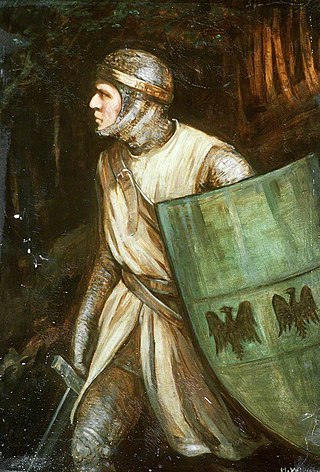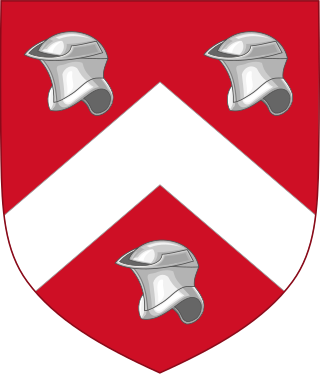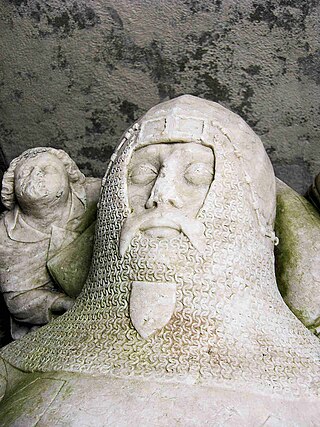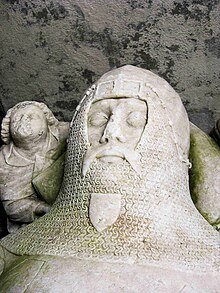
Owain ap Gruffudd was King of Gwynedd, North Wales, from 1137 until his death in 1170, succeeding his father Gruffudd ap Cynan. He was called Owain the Great and the first to be styled "Prince of Wales", and the "Prince of the Welsh". He is considered to be the most successful of all the North Welsh princes prior to his grandson, Llywelyn the Great. He became known as Owain Gwynedd to distinguish him from the contemporary king of Powys Wenwynwyn, Owain ap Gruffydd ap Maredudd, who became known as Owain Cyfeiliog.

Sir Owen Tudor was a Welsh courtier and the second husband of Queen Catherine of Valois (1401–1437), widow of King Henry V of England. He was the grandfather of Henry VII, founder of the Tudor dynasty.
Ednyfed Fychan, full name Ednyfed Fychan ap Cynwrig, was a Welsh warrior who became Seneschal to the Kingdom of Gwynedd in Northern Wales, serving Llywelyn the Great and his son Dafydd ap Llywelyn. Ednyfed claimed descent from Marchudd ap Cynan, Lord of Rhos, 'protector' of Rhodri Mawr, King of Gwynedd. He was the patrilineal ancestor of Owen Tudor and thereby of the Tudor dynasty.
Gruffudd Fychan II was Lord of Glyndyfrdwy and Lord of Cynllaith Owain c.1330–1369. As such, he had a claim to be hereditary Prince of Powys Fadog, and was a member of the Royal House of Mathrafal. His son, Owain Glyndwr, started the Welsh Revolt and became Prince of Wales.
This article is about the particular significance of the century 1101–1200 to Wales and its people.
Cadwallon ap Madog was the son of Madog ab Idnerth who had died in 1140, while Idnerth was a grandson of Elystan Glodrydd who had died in around 1010 and had founded a dynasty in the Middle Marches of Wales, in the area known as Rhwng Gwy a Hafren.

The Glyndŵr rebellion was a Welsh rebellion led by Owain Glyndŵr against the Kingdom of England during the Late Middle Ages. During the rebellion's height between 1403 and 1406, Owain exercised control over the majority of Wales after capturing several of the most powerful English castles in the country, and formed a national parliament at Machynlleth. The revolt was the last major manifestation of a Welsh independence before the annexation of Wales into England in 1543.

Anwyl of Tywyn are a Welsh family who claim a patrilinear descent from Owain Gwynedd, King of Gwynedd from 1137 to 1170 and a scion of the royal House of Aberffraw. The family motto is: Eryr eryrod Eryri, which translates as "The Eagle of the Eagles of Snowdonia. The family lives in Gwynedd and speak Welsh.
Rhys ap Tudur was a Welsh nobleman and a member of the Tudor family of Penmynydd. He held positions of power on behalf of King Richard II of England, including two periods as the Sheriff of Anglesey in the 1370s and 80s. Rhys accompanied the king on a military expedition to Ireland in 1398, but in 1400 began to support the revolt of his cousin Owain Glyndŵr against King Henry IV of England. In 1401, he and his brother Gwilym ap Tudur took Conwy Castle after infiltrating it, and liaised with Henry Percy prior to his own rebellion in 1403. After being outlawed by the king in 1406, Rhys was captured and executed at Chester in 1412, although later oral tradition claims he returned to Anglesey to die there.
Maredudd ap Tudur was a Welsh soldier and nobleman from the Tudor family of Penmynydd. He was the youngest of six sons of Tudur ap Goronwy and was the father of Owen Tudor. Maredudd supported his cousin the Welsh patriot Owain Glyndŵr in 1400, alongside his brothers Rhys ap Tudur and Gwilym ap Tudur.

The Tudors of Penmynydd were a noble and aristocratic family, connected with the village of Penmynydd in Anglesey, North Wales, who were very influential in Welsh politics. From this family arose Sir Owen Tudor and thereby the Tudor dynasty, that ruled the Kingdom of England from 1485 to 1603. The Tudor dynasty ended in the early 17th century with the death of Elizabeth I.

Goronwy ap Tudur Hen, also known as Goronwy ap Tudur or Goronwy Fychan, was a Welsh aristocrat and Lord of Penmynydd. He was a member of the Tudor family of Penmynydd, Anglesey, North Wales, and a direct ancestor of Owen Tudor and thereby the Royal House of Tudor. He was a soldier for the English crown, who fought in the First War of Scottish Independence, including in the English invasion which led to the Battle of Bannockburn. He remained loyal to King Edward II of England until the king's death, and was both a yeoman and forester of Snowdon. After his death in 1331, his body was interred in Llanfaes Friary, near Bangor, Gwynedd.
Tudur Hen or Tudur ap Goronwy was a Welsh aristocrat and original founder of the House of Tudor. He was one of three sons of Goronwy ab Ednyfed who received lands from King Edward I of England. Nonetheless, he backed the rebellion of Madog ap Llywelyn, but afterwards swore allegiance to both Edward I and his son, Edward of Caernarfon. Tudur Hen was responsible for the restoration of the Franciscan friary at Bangor, where his body was later placed on 11 October 1311.
Goronwy ab Ednyfed was seneschal to Llywelyn ap Gruffudd, king of Gwynedd. Goronwy was the founder of the Tudor family of Penmynydd.
Gwilym ap Tudur was a Welsh nobleman and a member of the Tudor family of Penmynydd. In 1401, he and his brother Rhys ap Tudur took Conwy Castle after infiltrating it, in support of their cousin Owain Glyndŵr. Gwilym was subsequently pardoned in 1413, following the execution of his brother a year earlier.
Gwilym ap Griffith, also known as Gwilym ap Gruffydd, was a Welsh landowner. He briefly lent his support to Owain Glyndŵr in the Glyndŵr Rising. When his loyalty returned to the Crown, he was granted the lands of number of Glyndŵr supporters and by the end of his life had ownership of the majority of the lands previously held by the Tudors of Penmynydd.
Gruffudd ap Maredudd ap Dafydd was a Welsh bard working in Anglesey in the service of the Tudors of Penmynydd. One of the last of the older school of poets known as the Gogynfeirdd, he resisted the innovations in Welsh verse-form which took place in his lifetime. About 2400 lines of his work have survived in the Red Book of Hergest. His best-known poem is "Gwenhwyfar", an elegy to a young lady. He was described by the literary historian D. Myrddin Lloyd as "the finest of all the late Gogynfeirdd poets" and by Saunders Lewis as "one of the greats".

A series of Welsh rebellions broke out in the century following the conquest of Wales by Edward I in 1283, which had brought the whole of Wales under the control of the Kingdom of England for the first time. In 1400, Welsh discontent with English rule in Wales culminated in the Welsh Revolt, a major uprising led by Owain Glyndŵr, who achieved de facto control over much of the country in the following years. The rebellion petered out after 1409, and after complete English control was restored in 1415 no further major rebellions occurred.






